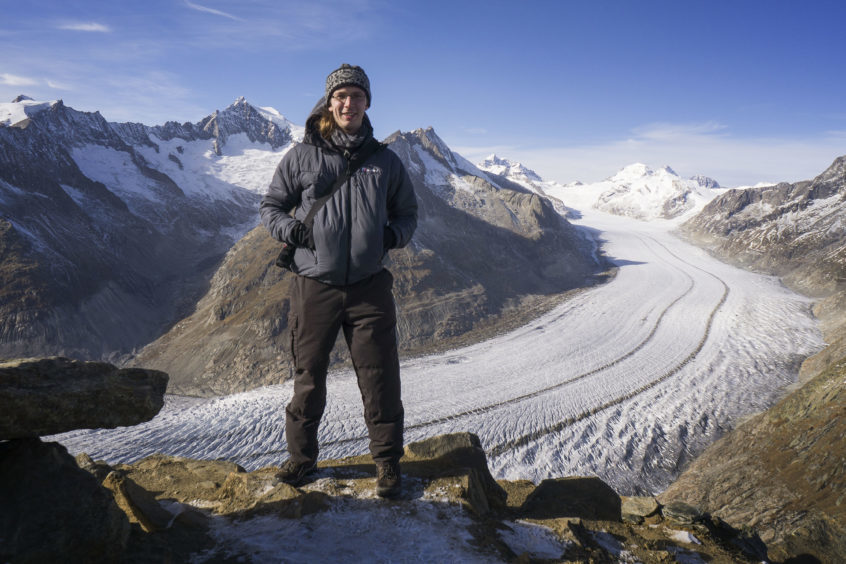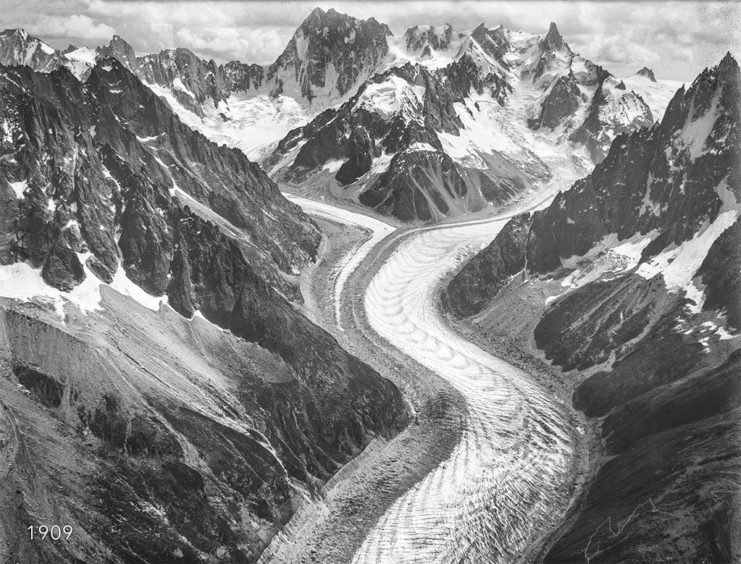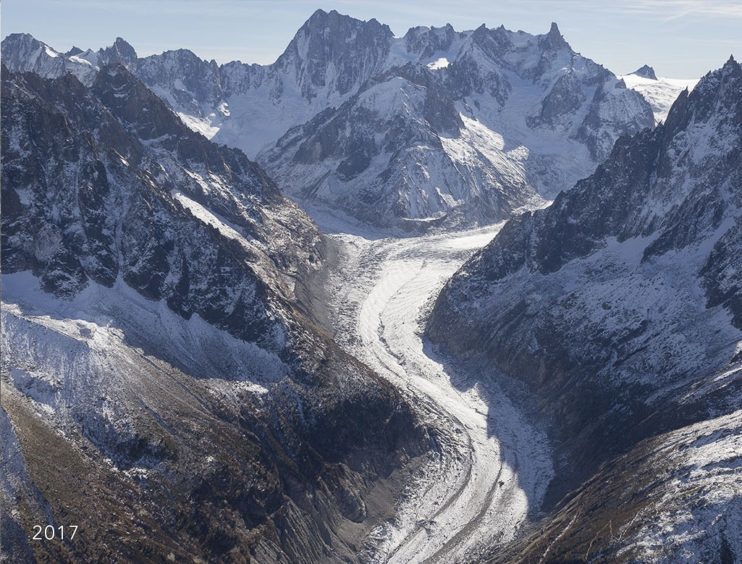In 1909 a perilous journey in a gas-filled balloon by Swiss photographer Eduard Spelterini resulted in one of the most famous aerial images of the Alps.
More than a century later, a Dundee University researcher has precisely replicated the image showing the dramatic sweep of the Mer de Glace glacier above Chamonix in a bid to document the effects of climate change.
Dundee photogrammetry expert Kieran Baxter was able to take Spelterini’s series of 12 black and white photographs and, using state of the art software and huge amounts of processing power, turn them into 3D models.
This meant he was able to determine not only the exact location from where the photographs were taken but also at what height.
Armed with this information, Kieran was able to take up to date images of the same landscape while perched on the edge of a chartered helicopter.
At first glance, the landscapes might look identical.
But, on closer inspection, the huge loss of volume of ice in the glacier becomes apparent, particularly at the base of the photograph.
Kieran, 29, said: “I wanted to see if some of the digital visualisation methods I’d been using in archaeology could be applied to glaciology and climate change.
“These landscapes are changing fast because of climate change. The ice is receding quickly.
“I was trying to find ways in which we can visualise that change while the glaciers are still there to photograph.”
The former Duncan of Jordanstone student was joined on his trip to the Alps last October by filmmaker Kieran Duncan, who has created a three-minute video about the process.
Their planned flight was delayed for a day while they waited for ice to melt on the range to bring out the landscape features.
“The original photographs were taken in August, so we were going up a little bit later in the year,” he said.
“We held off for the snow to melt a little bit so we could see more details and it was a glorious day.
“It was exhilarating taking the photographs. I was really exposed, perched on the edge of the floor, but to get that view of the landscape was spectacular.”
Comparing the differences in the images, Kieran was surprised at the changes in the glacier.
He hopes the photographs will help win “hearts and minds” to the impact of climate change.
“There has been huge volume loss – the surface of the glacier has dropped right down into the valley,” he said.
“There are many scientists doing good work and producing good data but sometimes you need striking images to get the message through.”
Kieran is now looking at carrying out a similar project based around photographs of glaciers in Iceland that were taken in 1982.












